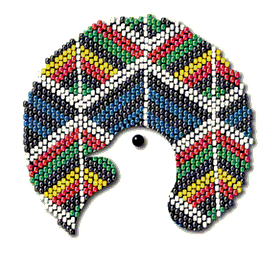Non-Aligned Movement
Non-Aligned Movement (NAM) is an international organization of states considering themselves not formally aligned with or against any major power bloc. Following the end of World War II, the movement was formally established in 1961, at the height of the Cold War, by leaders such as Jawaharlal Nehru of India, Josip Broz Tito of Yugoslavia, Gamal Abdel Nasser of Egypt, Kwame Nkrumah of Ghana, and Sukarno of Indonesia. These leaders advocated for a middle path for states in the developing world between the Western and Eastern Blocs in the Cold War.
Origins and Development[edit | edit source]
The Non-Aligned Movement traces its roots to the Bandung Conference of 1955, which was attended by representatives from 29 governments of Asian and African nations. The conference emphasized the importance of national sovereignty, opposition to colonialism, and the promotion of mutual interests and cooperation. The principles established at Bandung laid the groundwork for the formation of NAM.
The official establishment of the Non-Aligned Movement occurred during the first conference in Belgrade in 1961. The movement aimed to safeguard the independence, sovereignty, and territorial integrity of nations against colonialism, neo-colonialism, and imperialism. During the Cold War, NAM provided a platform for countries that did not want to align with either the United States or the Soviet Union, advocating for non-interference in internal affairs and the peaceful resolution of conflicts.
Principles[edit | edit source]
The Non-Aligned Movement is guided by several key principles, including mutual respect for each other's territorial integrity and sovereignty, mutual non-aggression, mutual non-interference in domestic affairs, equality and mutual benefit, and peaceful coexistence. These principles are intended to foster cooperation among member states and assert their collective interest in global forums.
Membership[edit | edit source]
Membership in the Non-Aligned Movement has grown significantly since its inception. From the initial 25 countries, NAM has expanded to include more than 120 member states and observers from various regions of the world, making it one of the largest groupings of states worldwide, second only to the United Nations in terms of membership.
Role and Influence[edit | edit source]
Throughout its history, the Non-Aligned Movement has played a crucial role in the decolonization process, fighting against apartheid in South Africa, and advocating for disarmament and international security. Despite the end of the Cold War, NAM continues to advocate for the interests of developing countries, focusing on issues such as economic development, social progress, and environmental sustainability.
The movement has faced criticism for its perceived lack of a cohesive political agenda and the varying degrees of alignment of its members with major powers. However, it remains a significant forum for countries of the Global South to articulate and promote their collective economic and political interests.
Summits[edit | edit source]
The Non-Aligned Movement holds summits every few years, where heads of state or government of member countries meet to discuss and coordinate their policies and strategies. These summits provide an opportunity for member states to express their views on global issues, forge alliances, and articulate a collective voice on the international stage.
Challenges and Future Directions[edit | edit source]
In the post-Cold War era, the Non-Aligned Movement faces challenges in maintaining its relevance and adapting to new global dynamics. Issues such as globalization, climate change, terrorism, and international economic crises demand a unified approach from its members. The future of NAM lies in its ability to evolve and address these contemporary challenges while staying true to its founding principles of non-alignment and mutual cooperation.
Navigation: Wellness - Encyclopedia - Health topics - Disease Index - Drugs - World Directory - Gray's Anatomy - Keto diet - Recipes
Search WikiMD
Ad.Tired of being Overweight? Try W8MD's physician weight loss program.
Semaglutide (Ozempic / Wegovy and Tirzepatide (Mounjaro) available.
Advertise on WikiMD
WikiMD is not a substitute for professional medical advice. See full disclaimer.
Credits:Most images are courtesy of Wikimedia commons, and templates Wikipedia, licensed under CC BY SA or similar.
Contributors: Prab R. Tumpati, MD





